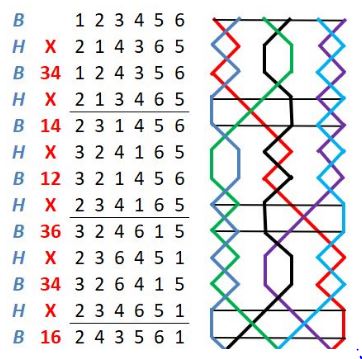Double Handed Change Ringing
- Where mathematics and music converge.
Question: What is It, this handbell ringing?
Answer: Change ringing on handbells is a mathematical art form that uses abstract patterns to create pleasing sequences of rhythmical sounds using musical handbells.
In the following YouTube video, Henry has memorised the patterns for a Plain Course of Plain Bob Minor; this is usually the first
method
that is learned.
Click
Play YouTube video
of Plain Bob Minor.
Apart from solo practise using a computer based simulator, bellringing is a team activity.
When ringing takes place, each member of the team has two of the available notes; there are typically between 6 and 12 notes (1 per bell), of a
diatonic
scale.
The need to avoid physical gatherings of people whilst continuing to work as a team during the covid pandemic led to the development of ringing simulators which were linked via the internet.
Our experience relates to two simulators, Ringing Room, and Handbell Stadium.
The use of these developments has been a significant help in keeping the handbell skills in the Hull Project moving forwards.
Question: What aspects of handbell ringing changed as a consequence of ringing online?
Answer: The execution skills are performed via hand held motion sensors or a keyboard, the musical sounds are computer generated.
Team working still dominates the activity.
Question: What is the meaning of the phrase "Mathematical Music"?

Diagram: 01.01.01 An example method grid.
|
The abstract patterns are used to create permutations and combinations of sound sequences with minimum or no repetition.
No two bells should sound at the same instant.
Visual aids to memory are not normally used, and in some circumstances are not allowed.
The abstract patterns are called
methods.
The pattern shown to the left is part of a moderately difficult method, known as "Norwich Surprise", for six bells.
|
|

